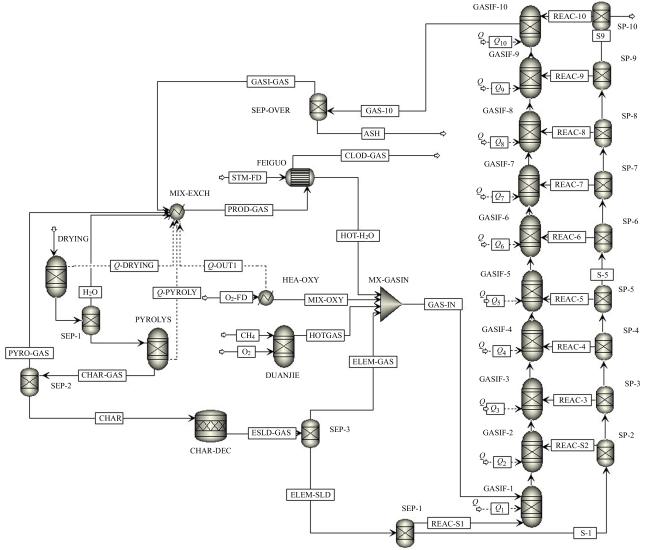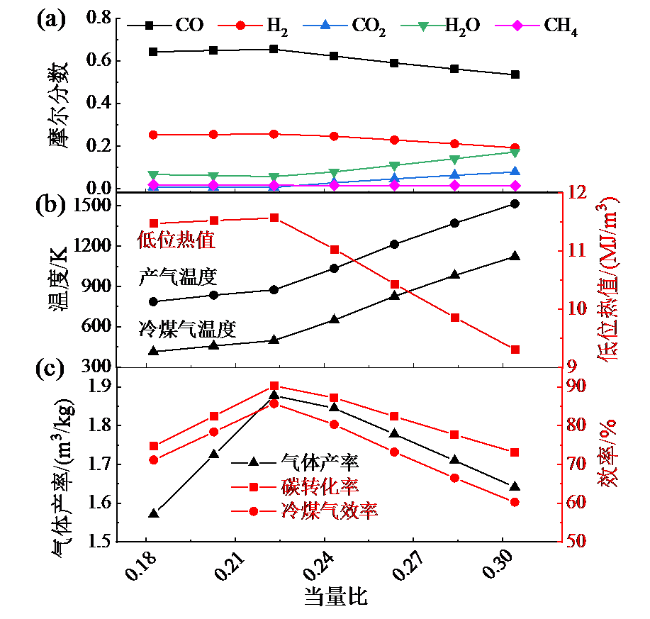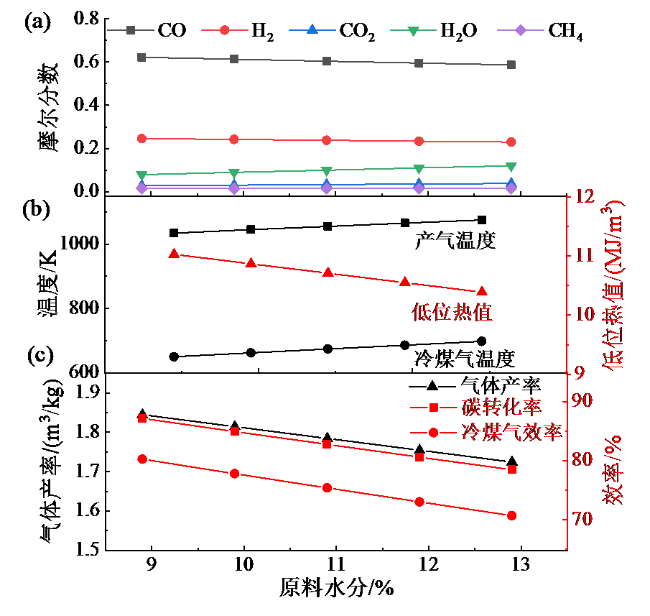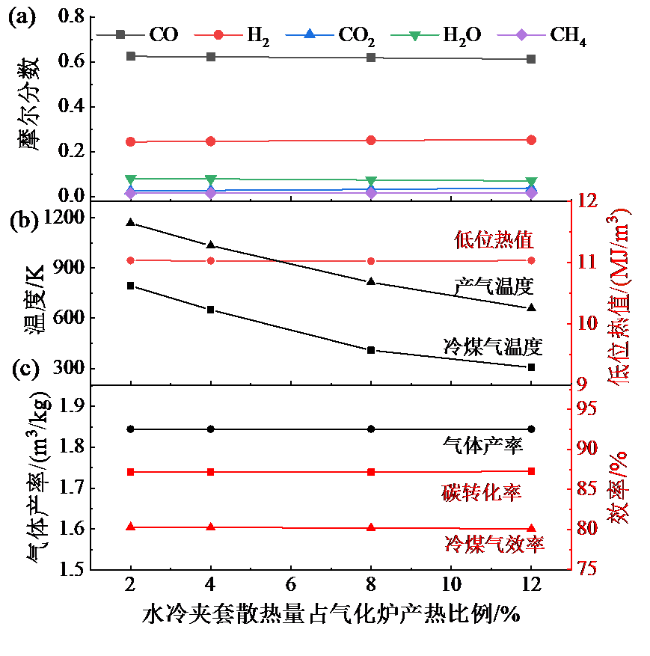0 引言
1 工艺及模型
1.1 工艺概述
Fig. 1 Schematic of high-temperature steam-oxygen gasification and melting process图1 高温蒸汽-氧气气化熔融工艺示意图 |
Table 1 Industry and ultimate analysis of raw material表1 兰炭工业分析和元素分析 |
| 元素分析/% | 工业分析/% | Qnet,ar/(MJ/kg) | ||||||||
|---|---|---|---|---|---|---|---|---|---|---|
| Cd | Hd | Nd | Sd | Od | Mad | FCd | Vd | Ad | ||
| 86.42 | 1.44 | 0.97 | 0.28 | 2.89 | 8.90 | 85.25 | 6.75 | 8.00 | 25.35 | |
注:M为含水率;FC为固定碳;V为挥发分;A为灰分;Qnet,ar为收到基低位发热量;下标d代表干燥基,ad代表空气干燥基,ar代表空气收到基。 | |
1.2 模型与假设
Fig. 2 Simulation of steam-oxygen gasification and melting system图2 蒸汽-氧气气化熔融系统模型 |
Table 2 Model and function of each operation unit in process simulation表2 流程模拟各操作单元模型及功能 |
| 模块 | 模型 | 作用 |
|---|---|---|
| DRYING(干燥) | RYield | 基于工业分析中兰炭的含水率模拟兰炭干燥过程 |
| SEP-1…3(分离) | Sep2 | 分离气-固两相 |
| PYROLYS(热解) | RYield | 将原料分解为非常规组分焦炭和常规组分挥发分CO、CO2、H2S、H2、H2O、N2、CH4、C6H6,各组分参数根据900 ℃时兰炭热解实验结果进行设置 |
| CHAR-DEC(裂解) | RStoic | 将焦炭分解为C、H2、O2、N2、S和灰分,计量系数根据热解实验中焦炭的工业分析和元素分析得到 |
| FEIGUO(余热锅炉) | HeatX | 提供加热气化剂的热量和原料干燥和热解所需的热量,其出口流股COLD-GAS代表理论条件下的冷煤气;整个模拟中,炉体热损失主要包括每层水冷壁散热Q1 ~ Q10 |
| DUANJIE(燃烧短节) | RGibbs | 模拟燃烧短节 |
| HEA-OXY(加热氧气) | Heater | 计算加热氧气所需热量 |
| MX-GASIN(混合进气) | Mixer | 将进料气混合 |
| SP-1…10, over(分离) | Sep | 控制碳元素转化 |
| GASIF-1…10(气化熔融) | RGibbs | 分级模拟焦炭气化与燃烧的过程 |
| MIX-EXCH(交换热量) | Heater | 将产气混合,并为煤的干燥与热解提供热量 |
2 模型验证
Table 3 Results comparison between simulation and pilot test表3 模拟结果与中试结果对比 |
| 产物 | 产量/% | |
|---|---|---|
| 实际中试 | Aspen模拟 | |
| CO | 67 ~ 71 | 62.22 |
| H2 | 23 ~ 29 | 24.60 |
| CO2 | 2 ~ 4 | 2.72 |
| CH4 | 1 ~ 3 | 1.43 |
| 其他 | 1 ~ 3 | 9.03 |
3 不同参数对系统性能影响
3.1 气化系统评价参数
3.2 氧气当量比对系统影响
Fig. 3 Influence of oxygen equivalence on the system图3 氧气当量比对系统的影响 |
3.3 蒸氧比对系统影响
Fig. 4 Influence of vapor/oxygen ratio on the system图4 蒸氧比对系统的影响 |
3.4 原料含水率对系统影响
Fig. 5 Influence of raw material moisture on the system图5 原料含水率对系统的影响 |
3.5 水冷夹套散热量对系统影响
Fig. 6 Influence of thermolysis on the system图6 散热对系统的影响 |










